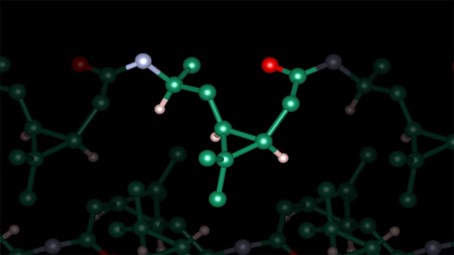Researchers develop a new polyamide family from a byproduct of cellulose production
Type of post: RESEARCH NEWS.
A research team from the Fraunhofer Society and the Technical University of Munich (TUM) has
developed a new polyamide family which can be obtained from a byproduct of
cellulose production.
News: “The synthesis of bio-based
high-performance polyamide from biogenic residues”, 27/1/2020.
Figure 1. Monomeric unit of
poly-3S-caranamide, the new biobased polyamide (Image: P. Stockmann, TUM). A
team led by Volker Sieber, Professor of the Chemistry of Biogenic Raw Materials
at TUM, has developed a completely new polyamide family which can be obtained
from a byproduct of cellulose production.
New polyamide family
The biogenic starting material, (+)-3-carene, is
made up of two rings which are fused to one another. The chemists at the TUM
and the Fraunhofer Institute for Interfacial Engineering and Biotechnology
(IGB) in Straubing have now modified one of the rings in such a way that it can
be opened up, yielding a long chain of molecules. The second ring remains
intact here. In this way, instead of a linear polymer chain like in traditional
polyamides, a chain which bears many small rings and other side groups emerges.
This gives the polymer completely new functions.
Feedstock
(+)-3-carene can be distilled at a high purity
and comparatively low cost from the turpentine oil produced as a secondary
product in the cellulose industry.
Special properties
The new polyamides are attractive for many
applications due to their properties. They melt at higher temperatures than the
competing crude oil derived products. In addition, controlling reaction
conditions and catalysts during synthesis, the new compounds can be produced
transparently as well as in a partially crystalline manner.





